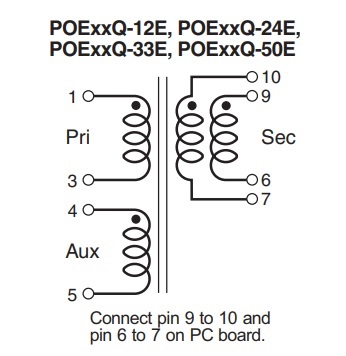Other Parts Discussed in Thread: PMP20878, , TPS2373, UCC24612
Dear all,
1)
would you recommend one of following transformers for the 40W and/or 51W , 24V flyback design?
2) Would you recommend a Flayback design or a Forward for 24V ( 40W and/or 51W) ?
In previous replay you recommended Diode flyback for 24V is this also true when currents are greater then 1.5A? Because PMP20878.
3) What is the recommended controller mode if flyback is used CCM or DCM?
Best Regards,
David.





